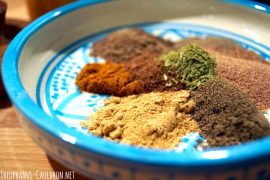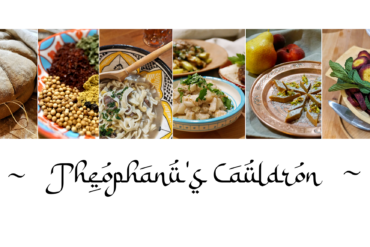Hello, dear readers. Unfortunately, it’s been a while since I last wrote something here. Four years ago I sadly had to put this passion project on hold for personal reasons. Now I dearly hope that my attempt to start with a new beginning is more successful. For the first recipe, I chose something that I’ve been lurking around for a while: a cold side dish. A salad made from carrots with a creamy dressing with sesame paste (Tahin), walnuts, honey, wine vinegar and lush herbs. You can eat it cold or with a little bit warmness left after cooking. The salad is nice to eat with some flatbread and/or meat but also delicious as part of different dishes served as mezze or as a topping on a bowl of rice.
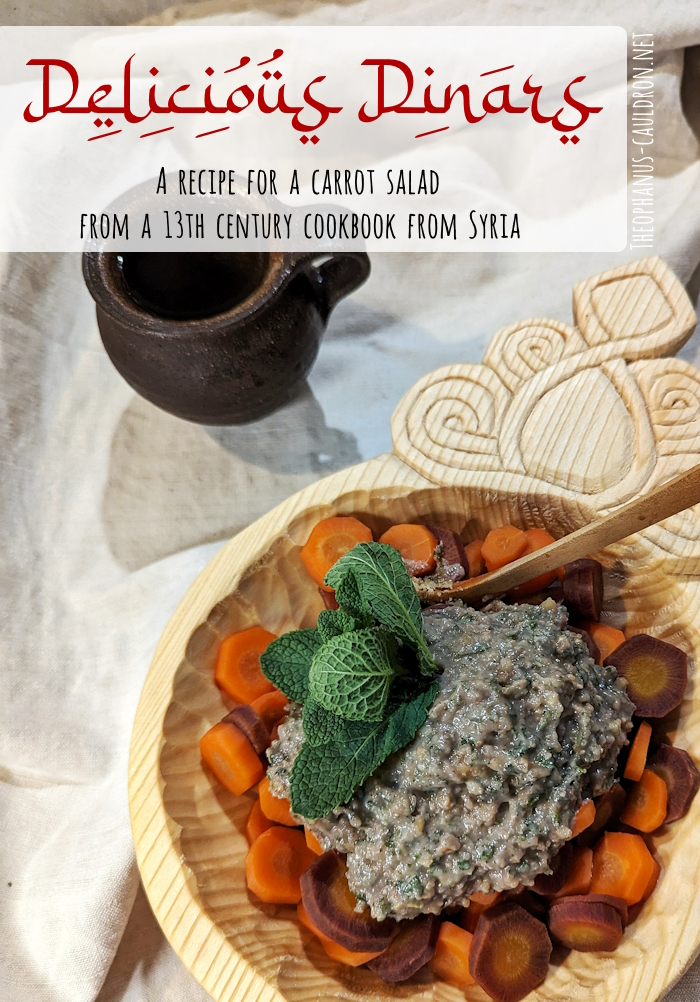
Even though the dish comes from a medieval Arabic cookbook, I can assure you that it is worth preparing not only from the perspective of experimental archeology – the carrot salad is just good and delicious and a joy to eat – and this is me speaking. A person who passionately hates cooked carrots since my childhood. 😅 But I learned better with this medieval recipe, that is a really nice addition for our modern palate, and have spontaneously fallen in love with this method of preparation. I decided not to cook the carrots completely soft and mushy – they were cooked, but still with a bit of bite. Coated in the creamy dressing, they are a dream, which shows that if something doesn’t taste good, it’s often due to the method of preparation and the consistency and not the ingredient itself.
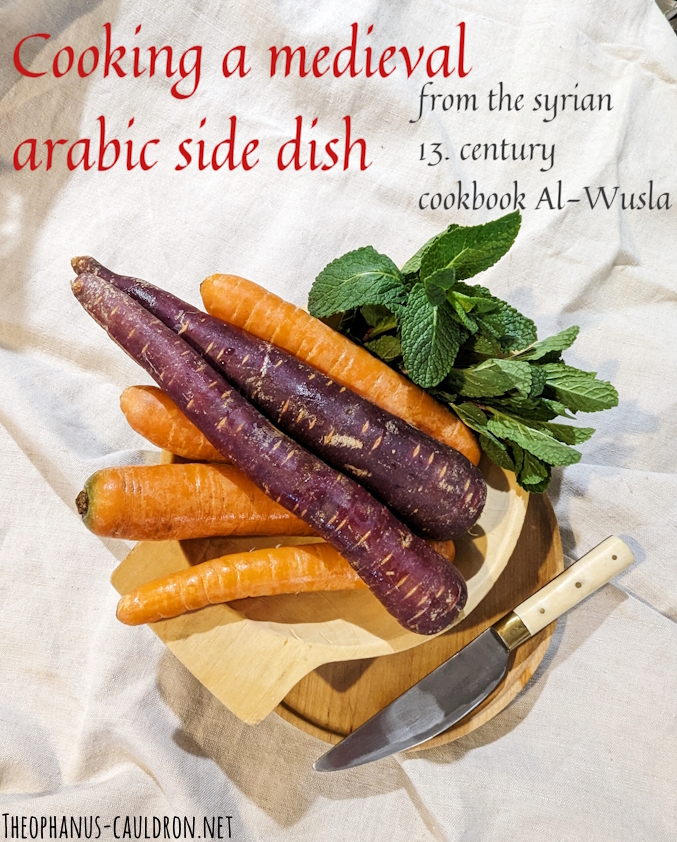
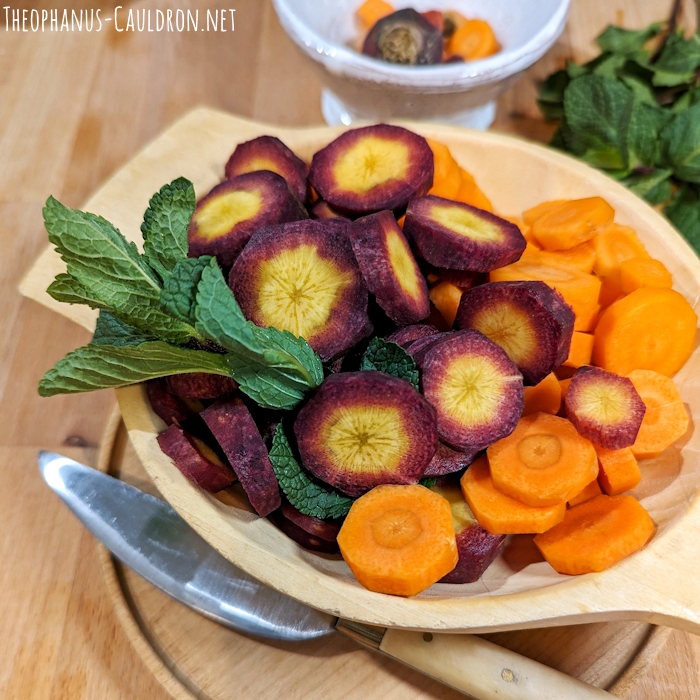
Vegan recipe for carrot salad – perfect for medieval Living History
I don’t want to make this a point of discussion here, but meat is much more affordable today than it was in the past. Many people like to ignore the fact that many traditional, old recipes were naturally vegetarian or vegan. The same goes for this rich, delicious salad – thanks to the nuts and sesame paste it contains. It is therefore also a wonderful recipe for the camp kitchen in the area of living history/reenactment: apart from the carrots used, everything is a long-lasting ingredient from the pantry. And even the roots can be stored for a relatively long time. I sweetened the vinegar in the recipe with some sort of liquid honey. In the translation of the medieval recipe I use, Charles Perry only speaks of “sweetened wine vinegar” and this is my choice to sweeten thiungs up. However, other sweetening options can also be used, such as date syrup/honey oder grape syrup. Even sugar – although of course very expensive – would be historically correct. If you want to take a more modern approach, you can substitute it with agave syrup, rice syrup or maple syrup.
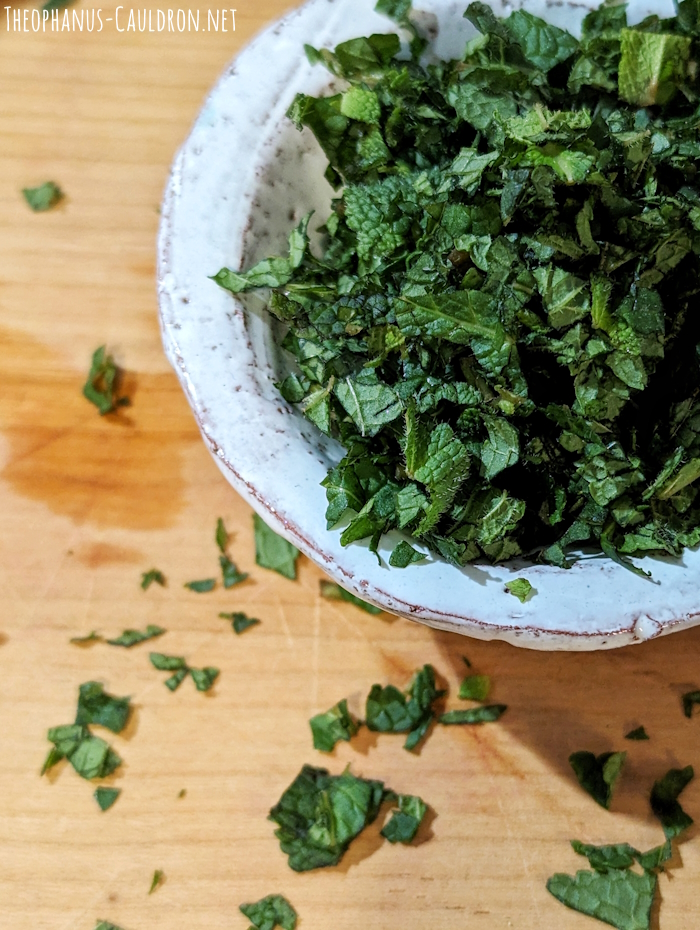
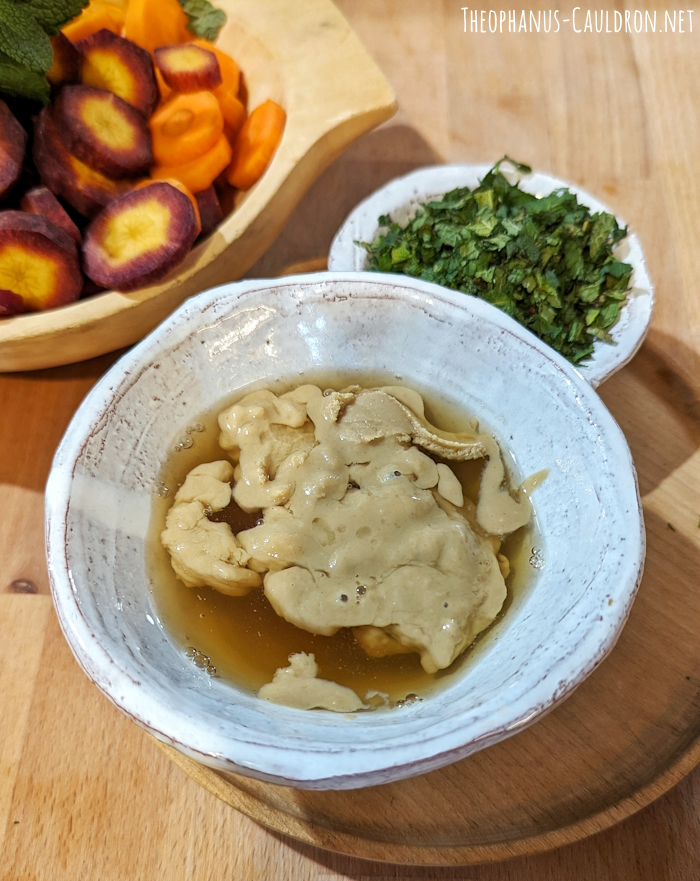
Veggie recipe from Scents and Flavors (Al-Wusla), a medieval cookbook
Like my version of the medieval spice blend Atraf al-tib this recipe is taken from the anonymous 13th century cookbook “Scents and Flavors“* (“Al-Wusla ila ‘l-Habeeb”) from Syria, in the English translation by Charles Perry. The unknown author lists two recipes for carrots. I will quote both because I cooked the second recipe, which – as it is sometimes common with medieval cookbooks – relates to the content of the first.
THE FIRST Cut the carrots crosswise like dinar coins and boil. Put minced parsley, mint, and rue; coriander seeds; and mixed spixes into sweetened vinegar and pour it on. Fry an onion in sesame oil, add and bring to the boil once.
(Scents and Flavors (Al-Wusla), translation by Charles Perry, chapter 8.119, page 127-128)
The “mixed spices” mentioned here again refer to the spice mixture Atraf al-tib, a mix that was common at the time. You can find out more about it in the linked article and recipe. The creamy walnut dressing doesn’t seem to have been unusual; I have already prepared a similar recipe for (May) turnips. But the recipe I interpreted via my cooking is this one:
THE SECOND KIND Take sesame paste dissolved with sweetened wine vinegar, some walnuts, mustard, minced parsley and mint, and pour onto carrots. The walnuts should be pounded smooth.
(Scents and Flavors (Al-Wusla), translation by Charles Perry, c. 8.120, p. 128)
Charles Perry writes in a footnote to the second carrot dish this:
The carrots are presumably cooked in the same way as in the previous recipe.
(Scents and Flavors (Al-Wusla), translation by Charles Perry, Notes, footnote 74, p. 146)
I came to a similar conclusion. Anyone who works with medieval or old cookbooks knows that the authors often assume a lot of general knowledge of the time, or that cooking steps previously mentioned in other recipes are often understood as “doing it like this in the following related recipes”. So this assumption sounds sensible at this point.
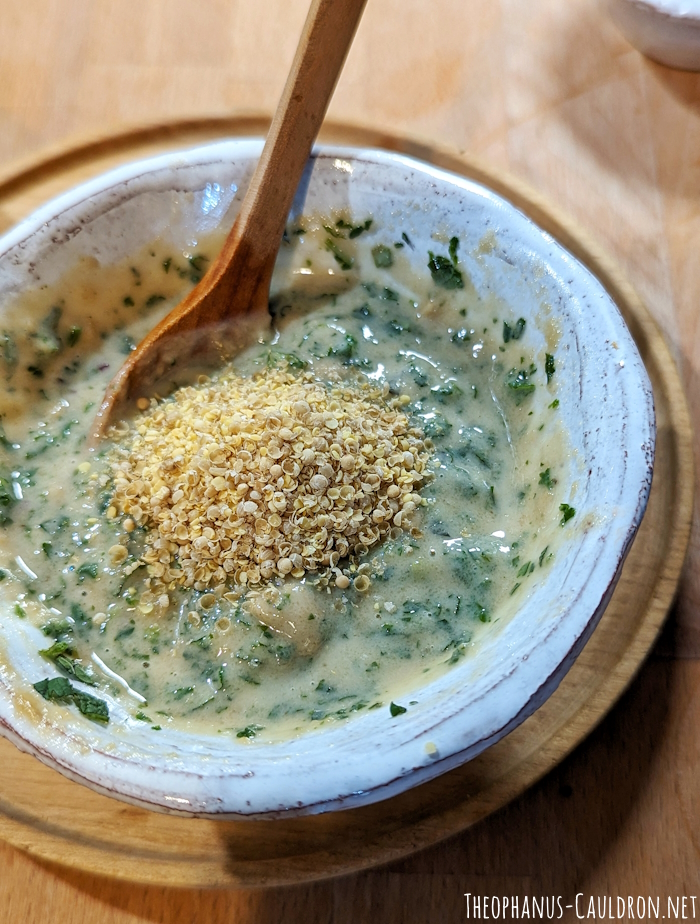
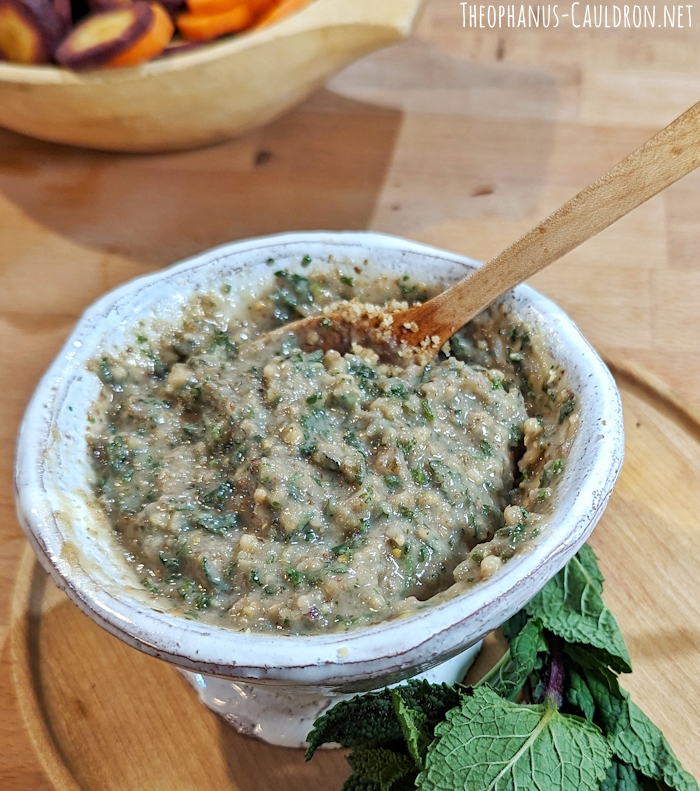
The following questions now arose for me:
- Does the reference to dinars only mean the round shape or also the thickness of the disc?
- Do the other ingredients also refer to the previous recipe? (Onions, rue, Atraf al-Tib, coriander, etc.)
- How much water were the carrots cooked in?
- Was it salted water?
- Was the cooking water drained?
–> My guess is that the reference to the iconic gold dinars, which were among the most famous coins in the Arab early and high Middle Ages, only refers to the round shape of the carrots, which is reminiscent of coins, not to the thickness of the slices. In another cookbook, Kitâb al Tabîkh (The Book of Dishes) from Al Baghdadi (available as “A Baghdad Cookery Book“* in Charles Perry’s translation), also from the 13th century, there is a one-pot dish called “Dīnāriyya” . Various ingredients (seasoned minced meat, carrots, boiled eggs) are shaped or cut into the shape of dinars and added to the stew. Since neither meat nor eggs could be sliced/formed so thinly without losing their shape in the stew, this leads me to believe that the comparison actually only refers to the round shape.
(Amusing side information: Over 700 years later in Berlin, Germany: My husband’s grandmother tried to sell the hated boiled carrots to him as “Talerchen” (Taler – a former German silver coin) when he was a toddler. So the idea lives on… 😅)
–> Since the mint and parsley mentioned in the first recipe are also listed individually in the second recipe, but rue, coriander etc. are not, I have concluded that these ingredients are not automatically included here.
–> I decided to keep the carrots just covered with water and not cook them floating.
–> In the aforementioned Kitâb al Tabîkh (A Baghdad Cookbook), vegetables are cooked in salt water. However, the author’s writing style is sometimes even more detailed in the cooking descriptions, for example he lists the same instructions over and over again for the stew recipes and even addresses this directly at one point. This lead me to the assumption that that salt is likewise already added to the cooking water in the recipes of the Al-Wusla (Scents and Flavors). There is also no alternative such as the – then common – Murrī (a salty seasoning sauce, similar to today’s soy sauce) mentioned as an alternative.
–> Apparently the cooking water was not poured away – although this is open to interpretation, perhaps the draining was also too obvious to mention. Since I hadn’t added any salt and that my salad sauce was still swelling/thickening and resembled more of a thick pulp than a thin dressing, I took a middle path: I drained the cooked carrots for the salad, but reserved about 1/3 of the salted cooking water. After folding in the dressing, the salad dressing had the right consistency and the saltiness was also pleasingly harmonious.
Attention: I cooked my carrots for a relatively short time; since they were not blanched afterwards, they even became another bit softer. However, they are not completely cooked down into a soft, spongy mass and still have a bit of a bite to them – which makes them edible for me.
As an alternative to white mustard seeds, black mustard can also be used, as they have a little more spiciness.
My finished dressing has a lavender hue, that’s due to me using also two carrots of the purple variety.
But now on to the recipe, finally!
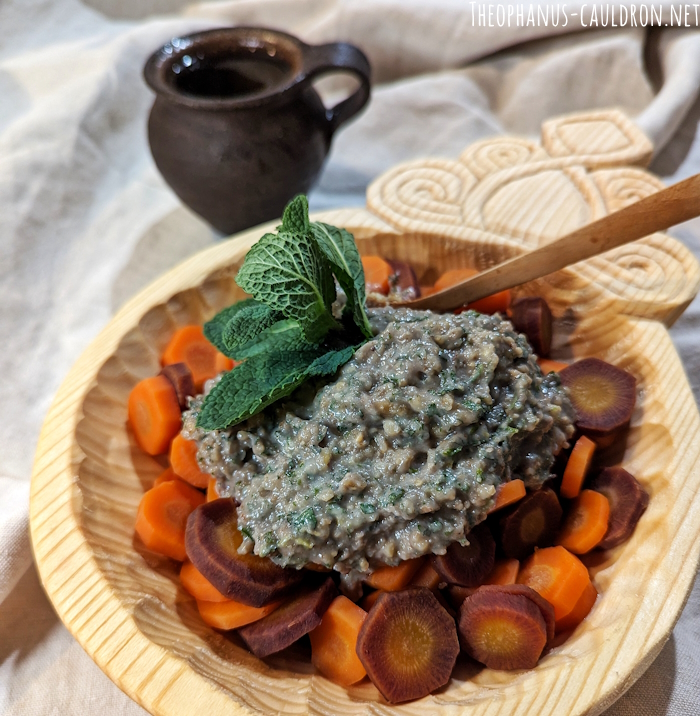
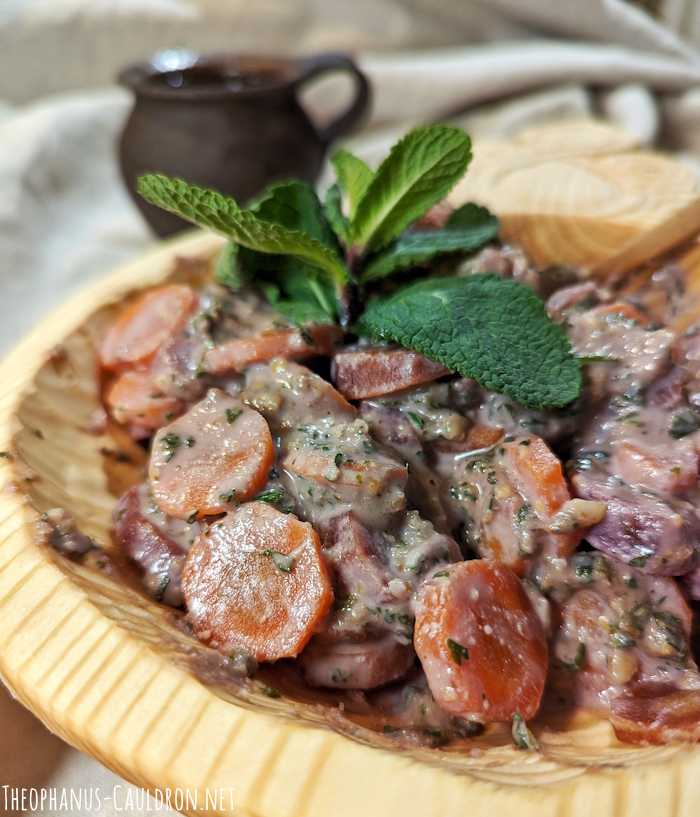
Recipe for Delicious Dinars – a medieval Carrot Salad
500 g carrots (weighted uncleaned)
35 g tahini* (sesame paste)
40 g white wine vinegar
30 g honey (liquid)
50 g walnuts* (shelled)
6 g parsley (large-leaved, without stems, only leaves)
6 g mint (without stems, only leaves)
3 g (= approx. 3/4 tsp) mustard seeds (white)
Preparation
- Clean and peel carrots, cut into 3-5 mm thick slices, like thalers or dinars.
- Bring salted water to the boil in a medium pot and add the carrots; they should just be covered. Put the lid on and simmer over medium heat for 7 minutes.
- Remove the pot from the heat and drain the carrots. Attention: Reserve about 1/3 of the salty cooking water in the pot.
- Place the cooked carrot slices and cooking water together in a bowl.
- Pound the walnuts and mustard seeds one after the other in a mortar. The walnuts should be crushed very finely, the mustard seeds can be ground a little more coarsely.
- Finely chop the washed and patted dry herbs.
- Mix the white wine vinegar with the honey in a bowl. Put the tahini into it and then dissolve the sesame paste in the white wine mixture while stirring.
- Fold the walnuts, ground mustard and the finely chopped mint and parsley into the white wine vinegar salad dressing and mix everything thoroughly. Let it rest for 5 minutes. The consistency of the salad dressing is more of a thick, creamy paste.
- Pour the salad dressing over the cooked carrots and the salty stock and fold in carefully. The dressing should beautifully mix up with the salty cooking water and produce a thin, creamy dressing that coats the carrot slices beautifully. Enjoy!
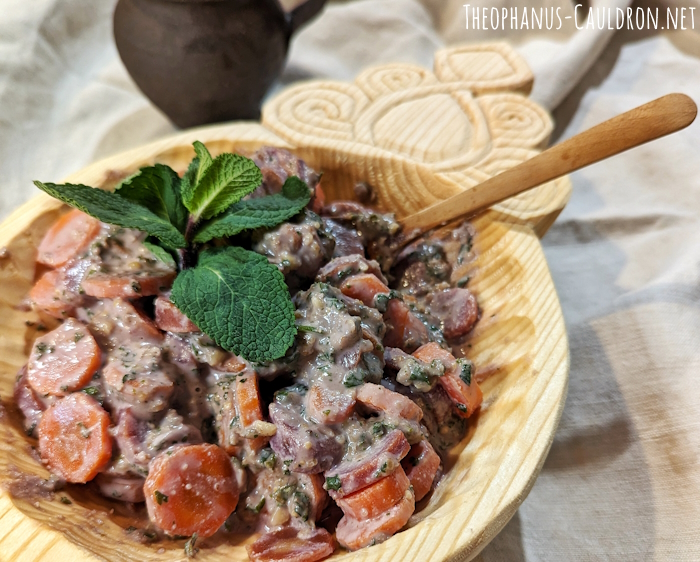
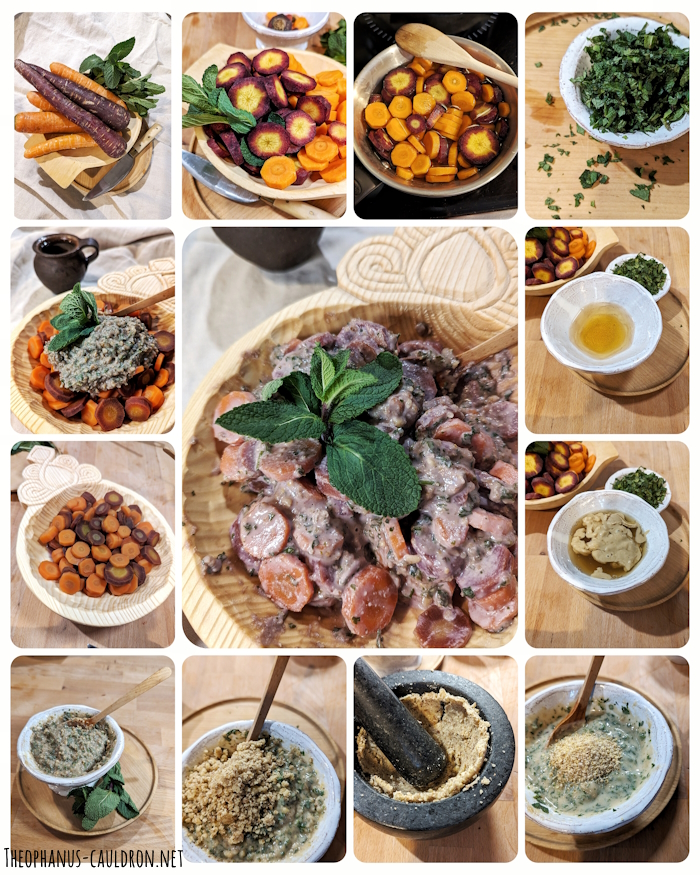
*Ad/Werbung. As an Amazon Associate I earn from qualifying purchases. Afiliate-Links zu Amazon. Bei einem Kauf hierüber erhalte ich eine Vergütung.
Literature:
Scents and Flavors*: A Syrian Cookbook, Perry, Charles (translator), New York University Press, New York 2020, ISBN: 978-1479800810
A Baghdad Cookery Book*, Perry, Charles (Übersetzer), Prospect Books, Croydon 2005, ISBN: 978-1903018422
If you like my research articles and recipes, I would be very happy about your support. You can back me up monthly via Patreon or simply buy me a “coffee” via Ko-fi. Thank you for your appreciation of my work! Your actions feed my work and my blogs! ![]()

